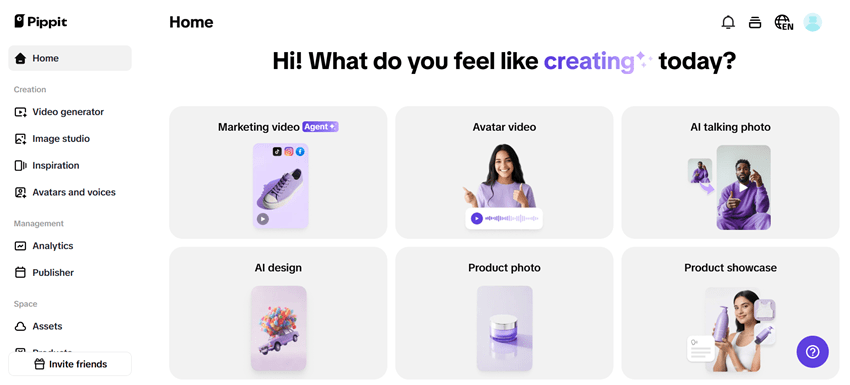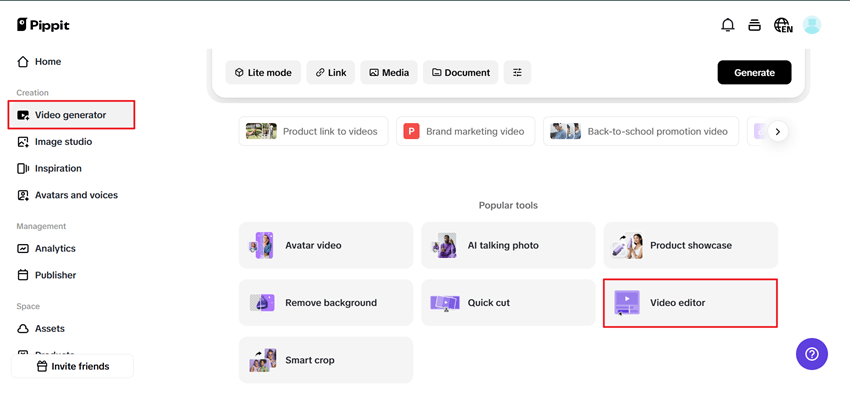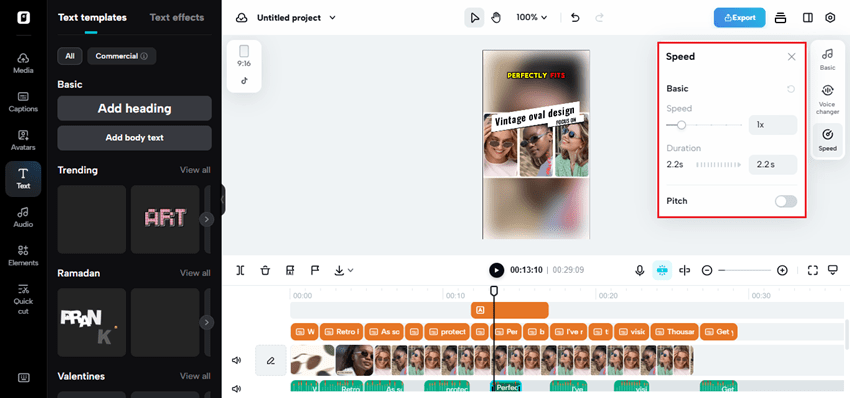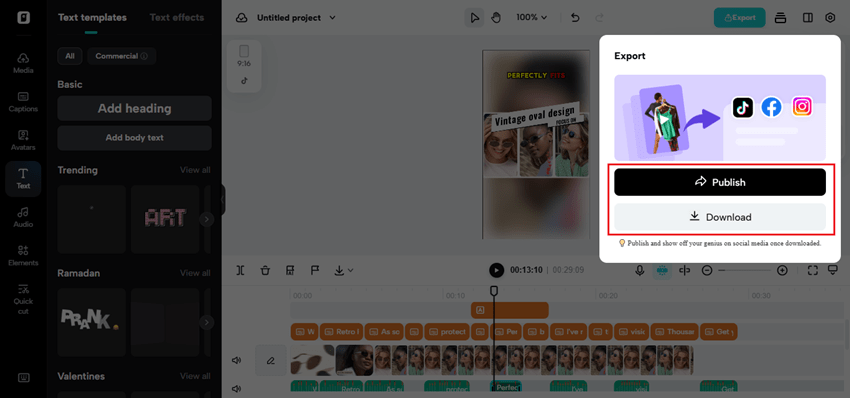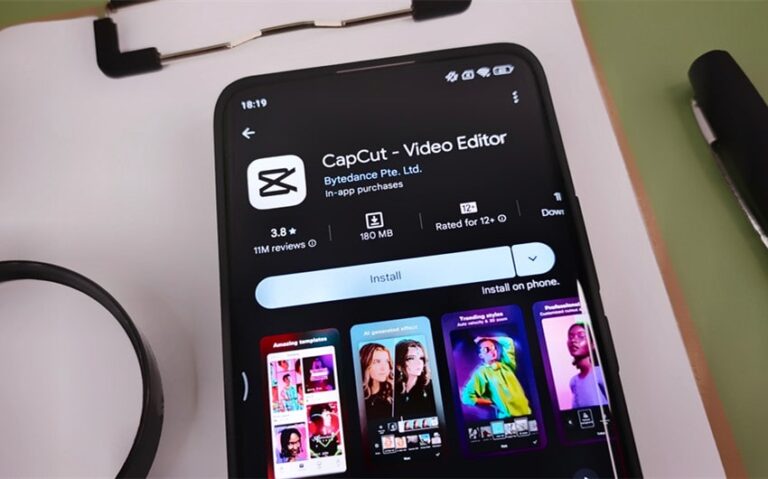Pacing for Platforms: Choosing the Right Audio Tempo for TikTok vs. YouTube vs. Podcasts
Each platform has a personality, and audio tempo is a simple way to align your message with that personality. An audio changer allows you to match pace to the medium: staccato and speedy for short social clips, consistent and conversational for long-form video, and paced for deep-dive audio. Pippit’s audio speed changer capabilities make it easy to test tempos, so you can dial in the sweet spot where listeners linger and act. This guide assists you in choosing tempos and editing tricks appropriate for TikTok, YouTube, and podcasts.
Knowing platform attention spans
TikTok audience demands instant hooks. The platform favors pieces of content that hook within the initial second and sustain momentum. Shorter attention spans translate to quicker narration, more concise scripting, and editing out anything that is not advancing the narrative. For TikTok, use short sentences, quick speech, and visual points that lock firmly in sync with the audio.
Writing for tempo
Your scripting should be as close to the platform as possible before you record. For clips, cut sentences to the bone and punchy leads. For YouTube, start with a definite promise, follow it up with examples, and use deliberate pauses to allow ideas to sink in. For podcasts, script structured segments and signpost them.
Delivery is important too. On TikTok, it’s all about energy; on YouTube, it’s all about clarity; on podcasts, it’s about warmth and consistent cadence building rapport. How you place emphasis and breathe defines perceived credibility.
Editing techniques that complement pace
Edit out dead air mercilessly for quick cuts and retain a few breaths in longer cuts. Tighten pacing micro-edits without sounding jumpy. In digital tempo adjusting, keep edits from erasing natural intake of breath and articulation so voices sound human. Motion and visuals must reflect audio tempo. Fast zooms and fast cuts are appropriate for quick delivery; slow pans and stable framing accommodate quieter narration. Switching the setting behind your subject with Pippit’s photo background change can create the ideal mood for each platform, dramatic for brief clips, neutral for extensive explanations.
Three platform templates to test
TikTok template: hook within 0–2 seconds, three staccato beats, strong call to action. Target 1.1x to 1.25x normal speech rate on punchy lines, retreating to 1.0x for major reveals.
YouTube template: intro promise, longer body, summary. Employ 0.95x to 1.05x for sustained clarity; gain a bit speed during cuts or montages.
Podcast style: chaptered storytelling, relaxed conversational pace. Experiment with 0.85x to 0.95x for reflective delivery and leave room for listener introspection.
Practical workflow with Pippit
Begin by cutting a neutral-tempo track. Utilize Pippit to produce platform-specific versions: push tempo up for brief clips, back off for long audio. Export several files marked by platform and tempo so that your social team can post the correct version without last-minute adjustments.
Three fun steps to alter audio with Pippit
Step 1: Upload Your Audio to Pippit
To get started, open Pippit, select the Video Generator, then select the Video Editor. Upload the audio file using the media tab from your device, your cloud storage, or links you share. If your audio is locked up inside a video, you can extract it quickly with Pippit, allowing you to have your audio primed for tempo changes whether you are working with individual tracks or jobs that are video based.
Step 2: Regulate Speed and Pitch to Get the Timing Right
Once you upload your audio, you can use the tempo and pitch control slider in Pippit to make immediate adjustments to playback. You can speed it up or slow it down while retaining the natural sounding tonality of the audio, plus you can preview it in real-time to get exactly what it sounds like. You can make small adjustments to keep your dialogue, music, or effects clear and sound natural. This is important when you build out a platform-specific pacing. This process is essential for quick and punchy TikTok shorts as well as slower, more detailed segments like Podcasts.
Step 3: Export and Prepare Platform-Specific Versions
Once you’ve perfected the sound, export your tracks in your preferred format and resolution. They have several versions ready for each platform, short high-energy cuts for TikTok, longer descriptive tracks for YouTube, and crisp steady audio for podcast use. Having separate exports keeps quality consistent and allows each platform to provide the best listening experience for your listeners.
Technical guidelines of thumb
When you change speed, don’t use extreme pitch shifts except where you desire a stylized sound. Keep lip sync intact for video, and preview audio on phone headphones and earbuds. When you speed up narration, cut pauses and condense sentences; when you slow down, think about shortening visual cuts so as not to drag. To maintain uniform edits between languages and captions, use Pippit’s online video trimmer to maintain user experience.
Accessibility and ethics
Always caption and transcribe. Altering tempo or speed impacts understanding differently with different audiences; offer alternative speeds for playback or downloadable versions to cater to different listeners. Edit interviews transparently so as not to misrepresent answers, and do not use tempo to manipulate meaning.
Pro tip: create a library of platform presets, tagged exports with tempo, target platform, and caption length, so you can piece together campaigns in a hurry. In the long run, this repository is a shorthand that saves hours and maintains your brand tone in each post and episode.
Final quick checklist
Create a small test batch for each platform, performing A/B tests to determine the metrics, have captions ready, preview on different devices. This should match tempo selections with visuals and captions, so it is consistent across the board. Tempo syncing is a simple but impactful tweak, and Pippit makes it easy to bank multiple versions with different tempos, so multiple teams can share the appropriate cut to each team; this way you can try different tempos, export the best files for each platform, and get better retention and response rates. Use Pippit today for this.


